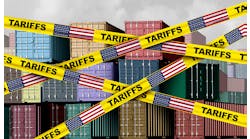2020 has been a fascinating year for supply chain professionals, transforming the discipline of supply chain optimization from behind-the-scenes to headline news. This is especially true in terms of issues such as business continuity, onshore sourcing and high-profile instances of consumer shortages.
Worldwide, organizations are taking a number of steps to rebuild supply chains, find alternative suppliers, revisit sourcing policies and reexamine the balance of safety and productivity. This is a time-consuming and resource-intensive process. However, many of the new practices, technologies, KPIs and strategies driven by COVID-19 could also help not only strengthen supply chains but also make them more environmentally sustainable.
Despite 2020’s supply chain challenges, many of the world’s leading corporations are doubling down on carbon reduction and environmental, social & governance (ESG) commitments—and supply chains are a big part of the equation. Here are seven global trends that point to post-COVID changes with potential to better position enterprises for greater environmental sustainability.
1. Increased Automation
The pandemic has accelerated investment in automation solutions to do more to limit human contact, ensure continuity, streamline logistics and increase human efficiency. In fact, some experts assert that enterprises with a higher degree of automation saw less supply chain disruption during the pandemic.
Organizations are exploring numerous opportunities to automate thousands of functions and tasks involving sourcing, procurement, order management, inventory, compliance, transportation, shipping and more. From securing supplier capacity to advance booking of transportation and real-time communication of supply and demand volume, the next few years should see unprecedented supply chain automation.
Many of these applications of automation also have tremendous potential to help reduce a supply chain’s ESG impact. While high-profile technology such as robots and autonomous vehicles get all of the attention, automation efforts don’t have to be elaborate to make a huge impact. Merely eliminating paper in favor of enterprise-wide digitization for processes like invoicing, order management and QA/QC helps reduce environmental impact significantly.
2. Increased Co-Innovation across Organizations
Presented with monumental challenges, the pandemic spurred supply chain partners to sit down (remotely) and ask, “How can we work together to make this happen?” This collaboration meant co-innovating to find new ways to source, buy, move, store, sell and deliver.
This is just the kind of cross-organizational collaboration it will take to explore new and more sustainable ways to manage supply chains in the future. The pandemic-driven connection of disparate organizations, systems, workflows and resources in pursuit of a greater goal foreshadows what it will take to reach Paris Agreement commitments. This kind of co-innovation is already underway in the energy and technology sectors.
3. More Visibility across the Supply Chain
Last year at this time, many were comfortable painting broad-brush strokes regarding the minutiae of vendor stock, the source materials involved in a Tier 3 supplier’s components, or extensive contingency plans—but things have changed. Post-COVID supply chain stakeholders will demand unprecedented levels of visibility. This means an expectation of comprehensive, real-time supply chain status across complex, global inter-business processes and a whole new set of visibility KPIs.
From a sustainability standpoint, this type of end-to-end visibility could be a great tool in vetting and monitoring ESG-related metrics and protocols. Imagine seeing not just material certifications or parts delay status, but also a detailed reporting of a vendor’s Scope 1, 2 and 3 carbon emissions—and maybe even its credentials on issues such as human rights or diversity. More visibility means a better foundation for decisions of all kinds, and sustainability is no exception.
4. Sourcing More Materials and Components Closer to Home
Many enterprises are now looking to diversify their supplier base and reduce supply chain risk via closer-to-home providers. The high-profile examples made plain by 2020 include things like pharmaceuticals, rare earth minerals and key components used in the defense industry.
Sourcing materials closer to home could also help lower transportation-related carbon emissions—and transportation costs. This shifting demand could help reshape a number of materials and manufacturing markets worldwide. We have already seen U.S. companies in certain sectors diversify away from places like China in search of greater supply chain resilience, a trend that was confirmed in recently published research by global consulting company PwC.
5. Reducing Waste and Cost in Manufacturing
Both resource constraints and financial pressures mean many manufacturing sectors are pushing for further waste and cost reduction. Some will continue to pursue lean manufacturing practices such as 5s methodology (6s with the addition of “safety”), Six Sigma and cellular manufacturing. Strong lean inventory philosophies did lead to a lack of resiliency in plants in 2020 due to shortages and this needs to be addressed.
Still, the same tools designed to lean up operations by cutting down on safety stock or optimizing logistics usually also reduce environmental impact. The focus areas of lean manufacturing prove this out, seeking to reduce: defects, overproduction, waiting, non-utilized talent, transportation, inventory, motion and extra-processing. Lean inventory philosophies may need to be adjusted based on 2020 learnings.
6. Improving Transportation Efficiency through Tighter Planning
2020 supply chains held a lot of uncertainty. In response, enterprises compensated with extreme planning and communication. From our own work, we’ve seen clients reinvent how they optimize each and every inbound and outbound load and strive for enhanced communication in all logistical matters. These have included authenticated proof-of-delivery mechanisms, automated shipment confirmations, proactive supply chain alerts and other additions.
These tools could also have transformative impacts on supply chain sustainability. For example, logistics coordination for scheduling pick-ups can not only reduce trucking wait times and associated fees, but prevent millions of trucks from idling around the world, providing reduction in global emissions when implemented at scale.
7. Modeling for Optimized Performance
Software-based simulations have been a terrific tool to navigate an ever-changing field of suppliers, carriers, costs, geopolitical factors, inventory, contracts, forwarders, financial metrics and other dynamics. Through computing advances such as advanced algorithms, artificial intelligence, machine learning, pervasive integration and replication, organizations are now more efficiently gaming the outcomes of alternative scenarios.
This same modeling technology could be used to monitor supplier sustainability practices and their decisions around sourcing packaging materials, recycling and fleet electrification. Modeling can improve supplier-related decision quality and efficiency when it comes to many aspects of supply chain sustainability across all supplier tiers.
It’s taken centuries for global businesses to reach a state of accountability for ESG impact. But COVID-19 has brought many new challenges to light and will prove to dramatically shift how quickly we de-risk supply chains through diversification. These same best practices could also hasten our progress toward sustainability improvement.
Gary Neights is senior director, product management, with Elemica, a digital supply network for manufacturing industries.



